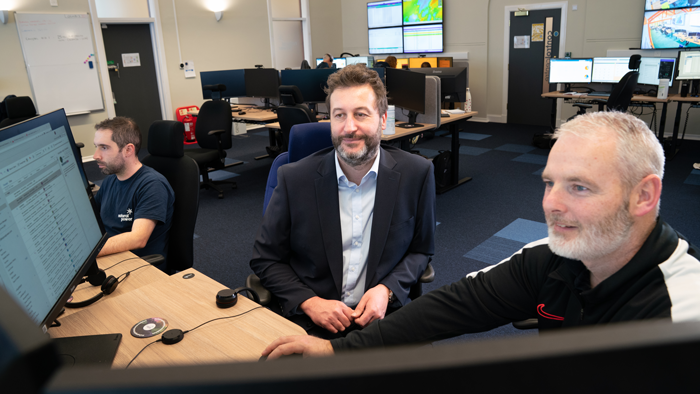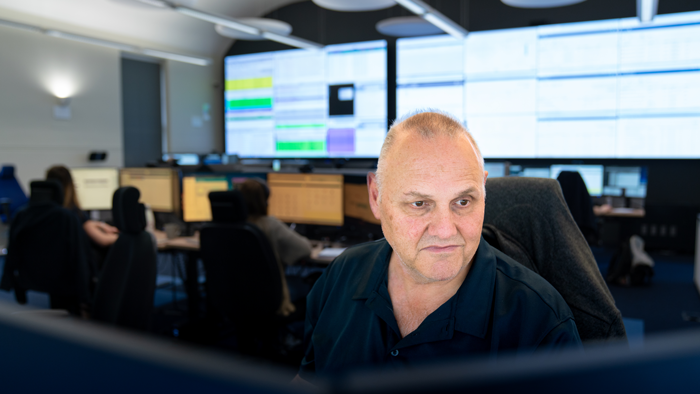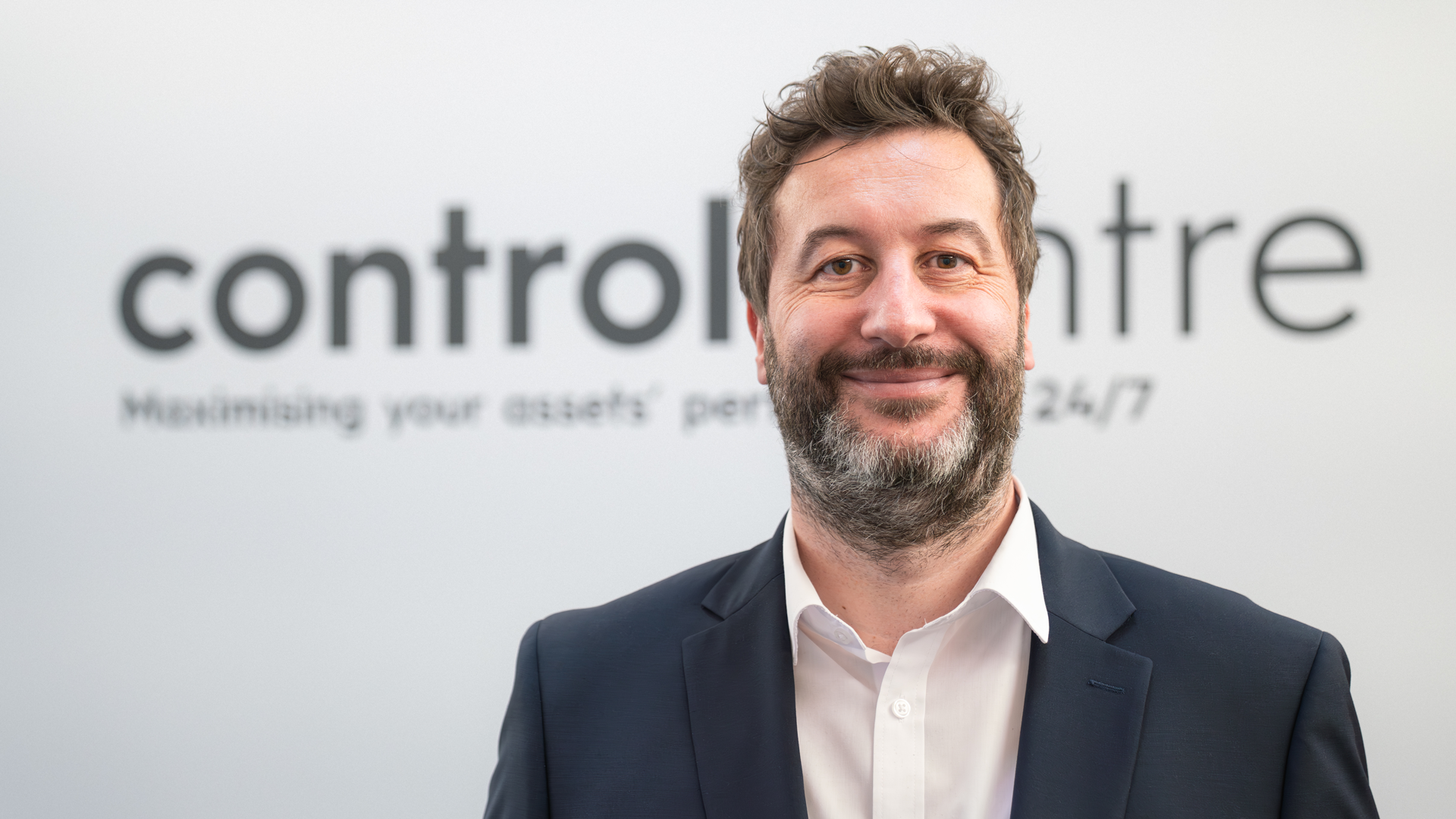You’ve recently joined Natural Power as Head of ControlCentre. What attracted you to the role and to Natural Power as an organisation?
I was looking for a new challenge — somewhere I could make a real difference. Natural Power’s agile, forward-thinking approach and strong values immediately stood out. The opportunity to lead such a capable team in an organisation that’s genuinely committed to doing what’s right for people, clients and the planet felt like a perfect fit.
For those who might not know, what exactly does the ControlCentre do, and why is it such a critical part of the UK’s renewable energy landscape?
Natural Power’s ControlCentre is the largest independently operated renewable energy control room in the UK. Based in rural Dumfries and Galloway, it operates 24/7, 365 days a year, supporting renewable energy owners and operators with services ranging from site access coordination and grid curtailment to emergency response and asset control for wind, solar, and battery storage sites.
We also play a key role in supporting the National Energy System Operator (NESO) to balance the network — ensuring the right amount of power is available for homes and businesses across the country. That means helping asset owners optimise performance and revenues, and curtailing generation when demand is low.

The ControlCentre is now the UK’s largest independent renewable energy control room. What makes it unique compared to other operational centres you’ve worked with?
While the principles of operational control and precision remain the same, the focus on generation rather than distribution brings a new level of complexity and purpose because we’re directly involved in managing renewable generation for the grid. What really sets Natural Power apart is its independence, expertise and the culture of collaboration that underpins everything we do.
You’ve joined just after a major expansion of the ControlCentre. What does that growth mean for the team, for Natural Power, and for the wider renewables industry?
The expansion is a huge vote of confidence in the future of clean energy. It positions the ControlCentre — and Natural Power — at the heart of the UK’s energy transition. For the team, it means access to new software, advanced technologies and an upgraded working environment. It also brings job security, new career opportunities, and continued investment in a growing team here in Dumfries and Galloway. Importantly, it demonstrates how the renewable energy industry is creating high-value, long-term employment in rural areas.
This week is International Control Room Week. What does this celebration mean to you and to the people working behind the screens every day?
It’s a great opportunity to recognise the people who keep the lights on — quite literally. The public rarely sees the complexity and commitment that goes into maintaining a stable energy network. Our operators work in a dynamic, high-impact environment that requires focus and resilience. International Control Room Week is a chance to reflect, celebrate, and appreciate the dedication of those who quietly make sure everything runs smoothly.

What are some of the biggest challenges control rooms face as the grid evolves and renewable capacity continues to grow?
The increasing complexity of technology and the sheer volume of data are key challenges. Battery energy storage systems, which now make up a growing share of UK capacity, bring a completely different scale of operational activity compared to wind or solar. Managing thousands of alarms and rapid-response events requires a highly skilled and adaptable team. The expertise needed is quite niche, so attracting, developing and retaining talented people is essential.
How do technology and innovation feature in the ControlCentre’s strategy? Are there particular tools or developments you’re most excited about?
Technology and innovation are central to everything we do. While there will always be a need for people at the heart of the control room, innovations such as predictive analytics, machine learning and process automation are helping us work smarter. These tools reduce workload, improve accuracy, and allow our operators to focus on higher-value decision-making. It’s about using technology to empower people, not replace them.
With more than 11.5 GW of renewable assets under management, including wind, solar, offshore and battery storage, what does a typical day in the ControlCentre look like?
Every day is different. The team continuously monitors thousands of assets across the UK and Ireland, responding to grid events, system alarms, and operational requests from clients. There’s a constant flow of information, coordination and communication — all focused on keeping assets performing safely, efficiently and profitably. It’s a fast-paced environment where teamwork and precision really matter.
You’ve spent two decades in power systems operations and leadership. What lessons or values from your career are you bringing to this next chapter?
Power systems are critical infrastructure — when things go wrong, the consequences can be far-reaching. That’s why I believe in rigour, accountability and proactive engagement with stakeholders like NESO, the Distribution Network Operators (DNOs) and our own client base. Equally important is creating a workplace where people feel valued, supported and fulfilled. When people enjoy what they do, they perform at their best — and that’s vital in a 24/7 operational environment.
Looking ahead, what’s your vision for the ControlCentre throughout the next few years? What role will it play in the UK’s clean energy transition?
Our goal is to continue growing in both size and capability to support the UK’s clean energy transition and strengthen national energy security. We’ll keep refining our processes, developing our people, and embracing innovation to maintain our reputation for operational excellence. The ControlCentre has a critical role to play in enabling a more resilient, flexible and sustainable energy system — and we’re ready to lead that journey.

